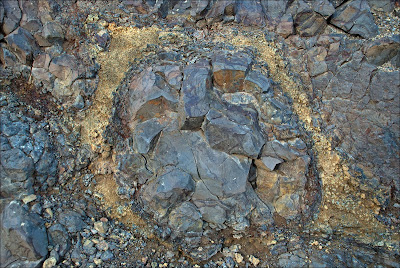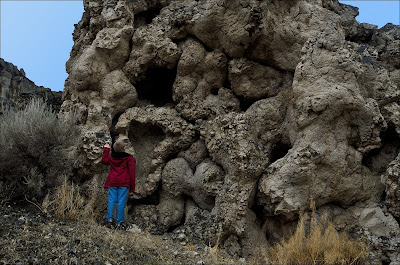Nick Zentner and I have been trying to figure out a few of the buttons on a video camera and how to hold a long pole with a fuzzy mic so we can film 2 Minute Geology videos.
One of our first episodes is embedded midway through this blog post.
The Columbia River Basalt Group of Washington and Oregon (USA) is a stack of more than 300 individual lava flows. The flows issued forth from deep fissures that began forming 17 million years ago in southeast Washington and northeast Oregon. Some of the flows have well-developed pillow structures in the basal sections - which proves the existence of lakes between eruptions. Thousands of years are estimated between eruptions of basalt lava from the fissures.
This episode begins with Nick standing in Sand Hollow (47,15033-119.98147) at one of the region's most impressive Pillow Basalt road cuts - where Washington Route 26 begins its climb east out of the Columbia River Gorge near Vantage, WA. The Ginkgo and Sand Hollow basalt flows are featured - 15 million year old lavas. Lake Vantage existed 15 million years ago.
Petrified logs on display in nearby Ginkgo Petrified Forest State Park have all been found within the palagonite zone in the base of the Ginkgo Flow. The water-logged logs escaped the incinerator of the Ginkgo Flow - and eventually became petrified as silica from the lava soaked into the wood.
New Pillow Basalt Video
Palagonite on Mars: Based on infrared spectroscopy, the fine-grained component of Mauna-Kea palagonite is the terrestrial material with the best match to the spectral properties of Martian dust, and is believed to be similar in composition and in origin to dusty component of the surface regolith of Mars. The spectroscopic signature of palagonitic alteration on Mars is used as evidence for the existence of water on Mars. -Wikipedia


















